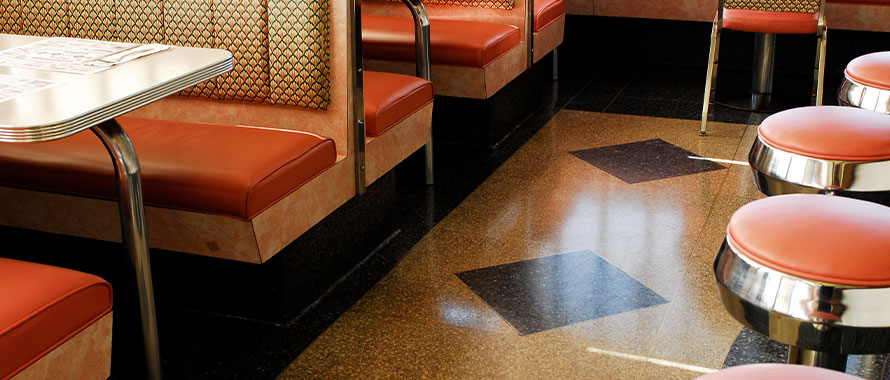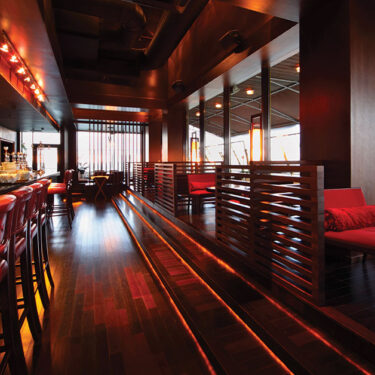Inside This Article:
- A ceiling collapse at Flyers Wings and Grill in Pine Hills, Florida, injured a woman while she was dining with her 2-year-old daughter, highlighting the unpredictable risks restaurants face.
- Hospitality industry liability claims are rising in frequency and cost, driven by higher medical and legal expenses, as well as increased litigation.
- Commercial General Liability (CGL) Insurance and Excess Liability Insurance can cover third-party medical expenses and other costs arising from accidents on a restaurant’s premises.
- Being proactive with insurance coverage and risk management plans can help prevent incidents and mitigate losses.
A woman was recently injured at a restaurant in Pine Hills, Florida, when a portion of the ceiling collapsed on her while she was dining. According to WKMG-TV News 6, the woman was with her 2-year-old daughter at Flyers Wings and Grill on Oct. 6 when the incident occurred. The woman was taken to a hospital with injuries to her head, neck, and back, and the experience left her young daughter “traumatized,” a family member told the news outlet.
The restaurant reportedly stayed open after the incident with a section blocked off, raising questions over whether other patrons could be at risk. Restaurant management told News 6 that the building had been inspected and approved by the county to remain in operation while repairs are made.
“It is an unfortunate incident, and I hope everyone recovers quickly,” said Andrew Mills, Underwriter, Commercial Insurance, Burns & Wilcox, Los Angeles, California. “The ceiling collapse shows how many different scenarios could lead to someone getting injured at a restaurant. It is not just slip-and-falls.”

The ceiling collapse shows how many different scenarios could lead to someone getting injured at a restaurant. It is not just slip-and-falls.
The damage “was significant” but could have been even worse, said Kaitlyn Wagner, Underwriter, Commercial Insurance, Burns & Wilcox, Tampa, Florida. “The child could have sustained very serious injuries,” she said.
A restaurant’s Commercial General Liability (CGL) Insurance can help pay for expenses related to third-party bodily injuries and property damage, while Commercial Property Insurance could cover building repairs and loss of business income.
“Damages could get very costly for the restaurant — from the injured party’s medical costs to the repairs, lost revenue while they cannot operate at full capacity, and even reputational damage,” Wagner said. “An incident like this could create significant financial losses for a business owner.”

An incident like this could create significant financial losses for a business owner.
Accident costs ‘could easily erode’ insurance limits
Although sudden ceiling collapses may be rare, restaurant injuries from unusual events are not entirely uncommon. Earlier this year, a Texas jury awarded approximately $4 million in damages to a man and woman who were injured when a plate glass window shattered into their restaurant booth in San Antonio in 2022. A restaurant in California was sued after a customer claimed she suffered permanent injuries from an overly spicy “Dragon Balls” appetizer, and a restaurant in Dunnellon, Florida, was recently sued after a woman claimed she tripped and fell into a hole in the ground outside of the establishment.
Accidents on restaurant premises often carry significant financial consequences. The National Restaurant Association notes that restaurant operators today are already contending with rising food and labor expenses that strain profitability, heightening the financial risk of an unexpected accident.
When a restaurant is sued, “it can definitely jeopardize the business,” Mills explained. “Without insurance, it could be very damaging,” he said. “You just never know what the cost of these claims may be, especially when you are talking about injuries.”
An injured customer could have months of treatment and lost income during recovery, Mills said. “If a business does not have the proper insurance in place, an accident can really expose them,” he said. “CGL Insurance is going to cover them for bodily injury or property damage that occurs on their premises to third parties. If they are self-insuring, they are taking a gamble on the future of their business.”
Excess Liability Insurance could be needed for costs exceeding standard CGL Insurance limits. In the recent ceiling collapse incident, “a business owner could be looking at medical payments for the injury itself, as well as pain and suffering for the child who was said to be traumatized,” Wagner said. “There is no dollar amount on something like that, and it could easily erode policy limits.”

A business owner could be looking at medical payments for the injury itself, as well as pain and suffering for the child who was said to be traumatized. There is no dollar amount on something like that, and it could easily erode policy limits.
Hospitality claim costs on the rise
Hospitality industry claims appear to be increasing both in volume and severity, according to Mills. Other common liability risks in the hospitality industry include slip-and-fall accidents, foodborne illnesses or contamination, assaults, and even injuries from chipping a tooth on a food item.
“Claims regarding restaurants continue to increase across the country, whether it is slip-and-falls or fights that occur because individuals are drinking too much,” he said. “As inflation continues to increase, so does the cost to pay out a claim.”
Liquor liability is another risk that makes restaurants particularly vulnerable to major losses, making Liquor Liability Insurance vital, Mills said. “It is becoming more common for CGL Insurance carriers to exclude liquor liability, so business owners typically need to purchase that,” he explained. “If a restaurant is selling any alcohol at all, they have a liquor liability exposure.”
Assault and battery claims also tend to be particularly costly, he noted, and these may be excluded or sublimited on some CGL Insurance policies.
“It is really important for the restaurant owner to engage with their insurance broker and make sure they are getting the best coverage available,” he said. “There could be business owners going without insurance, and I would highly advise against that. They may believe the premium will be too expensive, but the cost of an uncovered claim is going to be a lot more expensive. If they get hit with a large claim, that could ultimately lead to bankruptcy for the business. You just never know what is going to happen.”

It is really important for the restaurant owner to engage with their insurance broker and make sure they are getting the best coverage available.
Even a single injury claim “can quickly exceed what a business might put aside as a contingency fund,” Wagner added.
“All businesses face exposure to loss, whether small or big, and the expense can far exceed the premiums paid,” she said. “Defending against a liability claim can be very costly. Policy limits are typically up to $1 million, and an injury claim can easily hit $1 million, which most small businesses are not making on an annual basis. That can close a business down.”
Being proactive
Today’s society is increasingly prone to litigation, Wagner said, and “there is no telling how far these claims can go.”
“Unlike property damage claims, you cannot anticipate a maximum loss,” she said. “Excess Liability Insurance limits are really important because when a lawsuit happens, the costs can erode policy limits very quickly.”
To further reduce a restaurant’s risks, business owners are encouraged to prioritize risk management strategies. “An insurance broker who really knows your type of business can provide quite a lot of value,” Mills said.
Not all accidents can be avoided, Wagner acknowledged, but a solid grasp on current loss exposures can go a long way. “Be proactive in reducing or eliminating those risks,” she said. “You do not want to wait until you get a claim.”








